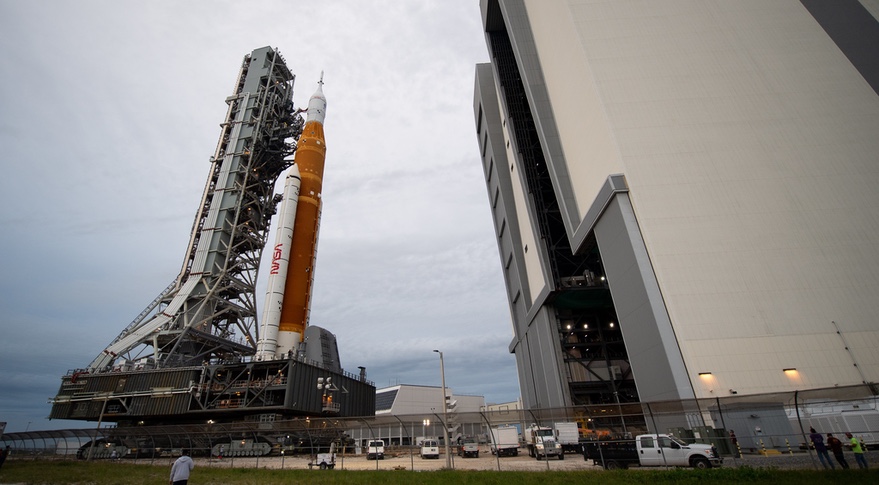KIHEI, Hawaii — NASA will wait until at least the middle of November before attempting another launch of the Space Launch System on the Artemis 1 mission, citing the impacts from Hurricane Ian.
NASA announced late Sept. 30 that inspections of Kennedy Space Center facilities after the passage of the storm a day earlier turned up no evidence of damage to the SLS or Orion spacecraft, which had moved back into the Vehicle Assembly Building Sept. 27 as a precautionary measure.
NASA reported no significant damage at all to KSC facilities from the storm, as did the U.S. Space Force to neighboring Cape Canaveral Space Force Station. Launch operations are resuming this week with an Atlas 5 launch of two SES communications satellites scheduled for Oct. 4 and a Falcon 9 launch of the Crew-5 commercial crew mission Oct. 5.
However, NASA said it has ruled out attempting a launch of the Artemis 1 mission during the next launch period, which opens Oct. 17 and runs through Oct. 31. Instead, it will focus on the following launch window, which runs from Nov. 12 to 27.
“Focusing efforts on the November launch period allows time for employees at Kennedy to address the needs of their families and homes after the storm and for teams to identify additional checkouts needed before returning to the pad for launch,” NASA said in the statement.
An October launch, even in the best circumstances, would have been difficult. Workers would need time to perform maintenance on the vehicles, including refurbishing the SLS flight termination system. Agency officials previously estimated that they needed about a week and a half after rolling back out to the pad to be ready for a launch attempt, giving technicians only a few weeks to complete the work to be ready for a late October launch attempt.
“I don’t think we’re going to take anything off the table,” Jim Free, NASA associate administrator for exploration systems development, said in a Sept. 27 call with reporters when asked if an October launch was feasible. However, he admitted, given that available time “getting back out to the pad and trying to get there may be a challenge.”
NASA, in the Sept. 30 statement, did not state when in the November launch period it might be ready to attempt a launch. “Over the coming days, managers will assess the scope of work to perform while in the VAB and identify a specific date for the next launch attempt,” the agency stated.
One issue for the November launch is that, unlike the launch opportunities in August and September, many of the windows on individual days are at night. Launch windows from Nov. 12 through 19 range from nearly midnight to 1:45 a.m. Eastern. Launch windows from Nov. 22 to 27 are in the morning to midday.
“Our preference is to launch in the daylight,” Free said at the Sept. 27 briefing, because of the improved tracking of the rocket during a daytime launch. He would not, though, rule out a nighttime launch for the first SLS mission. “I think we look at the risk-versus-benefit trades” for launching at night, he said.
“Our preference is probably a daylight launch, but we won’t rule out a nighttime launch, either,” Free added.
